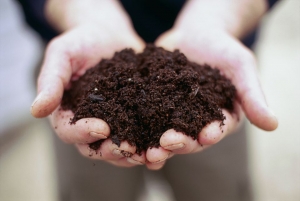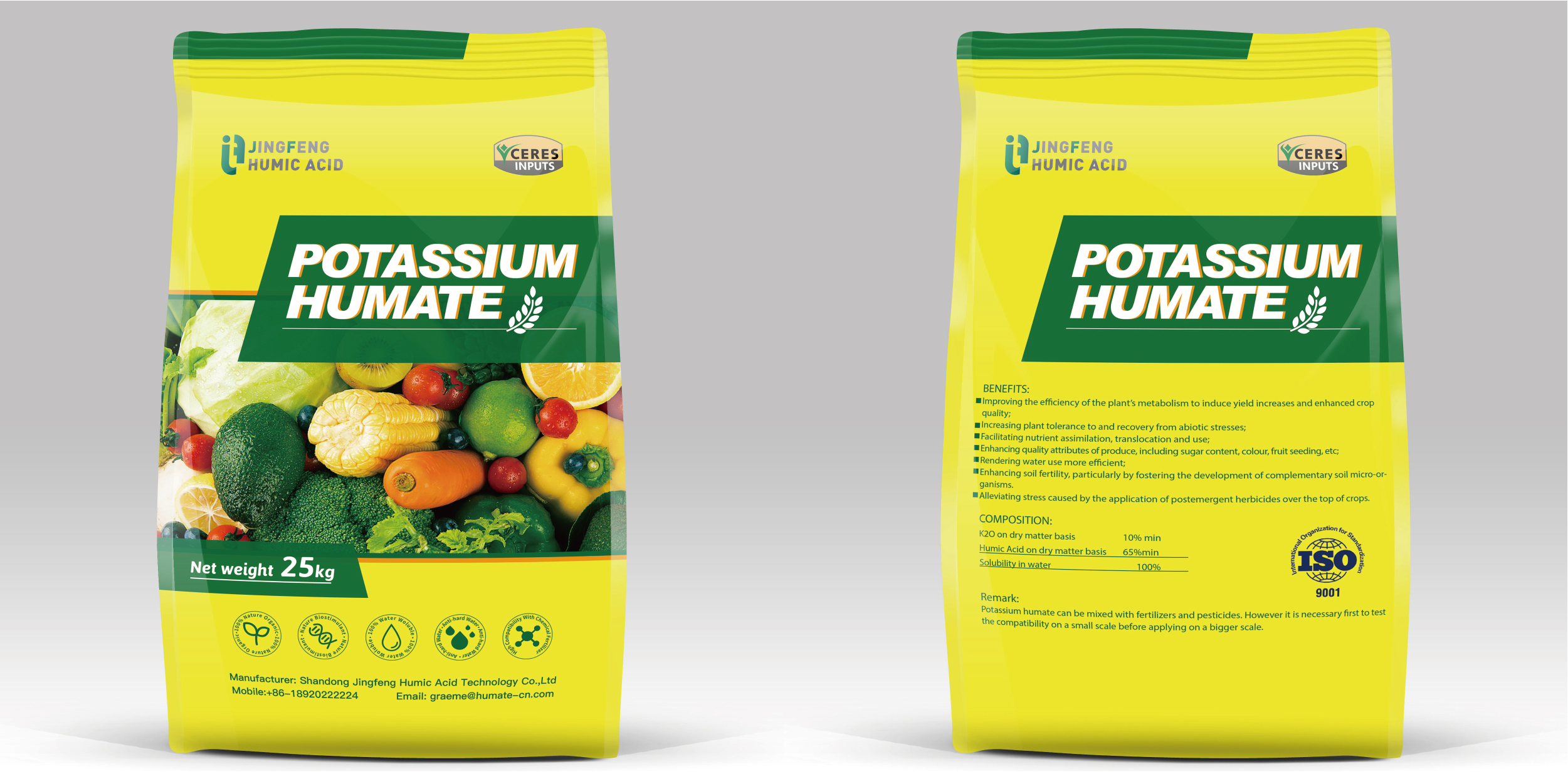Raw materials of potassium humate organic fertilizer – humic acid, is a natural organic degradation product, contains not only carbon, oxygen, hydrogen, nitrogen and other main elements, but also carbohydrates, amino acids, organic acids, phenols, alkaloids, vitamins, cellulose, hormones, enzymes and their derivatives, intermediates and aromatic substances, as well as a large number of beneficial microbial flora, and the addition of appropriate amounts of phosphorus, potassium and other trace nutrients.

Potassium humate organic fertilizer has high fertilizer efficiency and is also a kind of fertilizer synergistic agent. Which can increase nitrogen utilization rate by 1-2 times and increase phophrus and potassium utilization rate by about 1 times. Because of its stimulation, buffering and other functions. It can also be called stimulation fertilizer, buffer fertilizer, respiratory fertilizer .
Humic acid fertilizer also contains sugar, amino acids, organic acids, phenols, alkaloids, vitamins, cellulose, excitations, enzymes and other organic nutrients, they are also necessary for plant growth and development: plants need a lot of organic nutrition in order to complete the life process and reproduce. Such as the formation of tissue components (cellulose, hemicellulose, lignin); Storage (starch, protein, fat); activity energy (glucose, phospholipid, hormone, vitamin); resistance to environmental stress (alkaloids, flavonoids). Humic acid can provide these nutrients directly, which no other fertilizer can do.
The commons uses of potassium humate organic fertilizer,
1、Seed soaking, seed mixing, bactericidal germination.
2、Promote the root system growth, enhance the ability of water absorption and fertilizer absorption, stem stout resistance to lodging, inhibit soil-borne diseases.
3、Nitrogen stabilizer and slow-release agent, phosphorus synergizer, potassium protectant, micronutrient conditioner, chelate agent, promote balanced absorption of nutrient elements.
1)Potassium humate has synergistic effect on nitrogen fertilizer.
Urea and ammonium bicarbonate are the main nitrogen fertilizers. When urea and ammonium bicarbonate are applied to the soil, they will soon be lost with air and water.The aromatic nuclei, hydroxyl groups, carboxyl groups and other acidic functional groups in humic acid can react with nitrogen elements to form stable new ion groups, also known as complexes.
These complexes stay a longer time in the soil and gradually decompose and release nitrogen elements, allowing plants to slowly absorb them. According to statistics, nitrogen released by urea and ammonium bicarbonate can stay more than 60 days after complexing with soluble humic acid in potassium humate, increasing the utilization rate of nitrogen fertilizer by more than 10%.

2)Potassium humate has synergistic effect on phosphate fertilizer
When applied to the soil, the phosphorus element is fixed by the metal ions in the soil, transforming the available phosphorus into delayed or ineffective phosphorus.The aromatic nucleus, hydroxyl group, carboxyl group and other acidic functional groups in humic acid can react with phosphorus element, making it soluble phosphorus, increasing the activity of phosphorus element and easy to be absorbed by plants. According to statistics,after mixed with potassium humate organic fertilizer, the fertilizer efficiency of phosphorus can be increased by 5%-10%.
3)Potassium humate has synergistic effect on potassium fertilizer
The functional groups in humic acid can also absorb and store potassium ions, which can not only prevent the loss of potassium ions in sand with water, but also prevent the fixation of potassium in sticky soil, and the fertilizer efficiency of potassium can be increased by more than 5%.
4)Potassium humate organic fertilizer has the function of retaining water and trace elements, promoting soil aggregate structure
 Humic acid interacts with calcium ions in the soil to form flocculent precipitate gel, which can cement the soil together and turn the soil particles into a small reservoir for water and fertilizer conservation, increasing the soil interspace and thus improving the soil water and fertilizer conservation capacity.
Humic acid interacts with calcium ions in the soil to form flocculent precipitate gel, which can cement the soil together and turn the soil particles into a small reservoir for water and fertilizer conservation, increasing the soil interspace and thus improving the soil water and fertilizer conservation capacity.
4、Synergistic agent of pesticides
It can improve the activity of pesticides and herbicides, alleviate the harm and reduce the amount of pesticides.
5、Improve plant stress resistance
Disease resistance, cold resistance, drought resistance, premature senility resistance, resistance to repeated crop, salt and alkali resistance, resistance to hot and dry wind, etc. Anti-freeze and cold resistance, improve the ability of cold resistance by 60-90%, promote flower bud differentiation, more flower bud differentiation, more fruits. It can resist drought and hot wind, inhibit stomatal opening of leaves by 20-60%, reduce water transpiration by 30-50%, increase water content of leaves by 5.6-14.9%, and promote root deep growth.
Other functions:
- Insect repellent and disease resistant (mixed with washing powder and cooking oil to control aphids), prevent and control deficiency diseases.
- Break the soil consolidation, improve the soil buffer, water and fertilizer retention, permeability, enhance the ground temperature.
- Improve the quality of agricultural products, improve taste and flavor.
- Color and sweet, extend the picking period, storage and transportation resistance, market ahead of time, increase production and income.
- Mix with macro chemical fertilizer, raise fertilizer utilization rate, save chemical fertilizer more than 30%.





